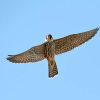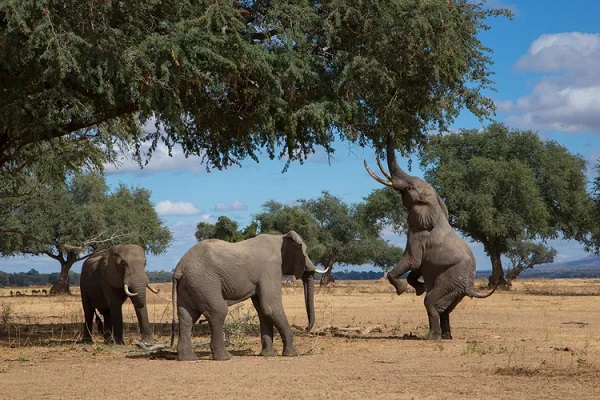
Species distinguished types have developed over the centuries to be just to the right height for their needs—and for animals like the giraffe and brown bear, that ideal height is quite high.
In some cases, the height seems driven by a need for reaching the protein-rich leaves that are higher in trees. In others, outrunning predators led to animals evolving to have longer legs. Alternative explanations for height include heat distribution in more tropical climates, room for the efficient digestion of large amounts of vegetation, and more.
Here are the eight tallest animals in the world.
1. Giraffes
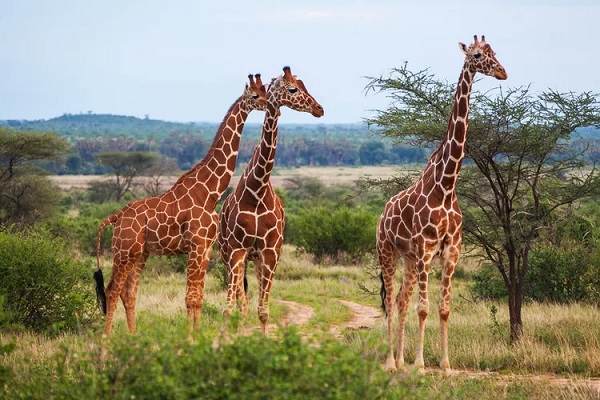
Standing between 14 and 19 feet, these leggy and adorable giants are the tallest land mammals on the planet. Sure, most of their height (up to eight feet of it, to be exact) is in the neck, but a giraffe’s legs can also average about six feet, easily outgrowing the average human.
YOU MAY LIKE ALSO: 10 Incredible Facts about Giraffes
The giraffe’s size is a significant advantage. Between its height, good eyesight, and strong kicks, these animals aren’t often brought down, even by lions. As a result, they can live 10 to 15 years in the wild.
2. Elephants
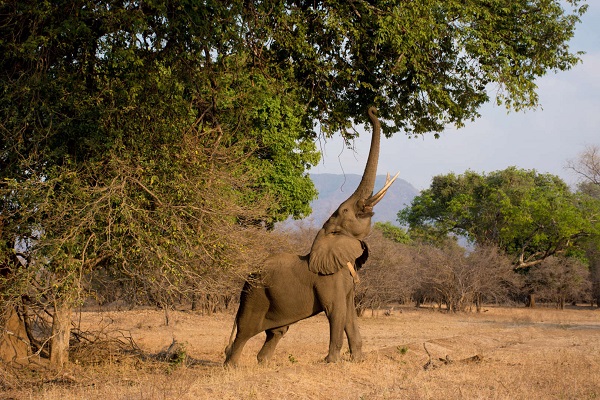
Next to the giraffe in terms of height is the elephant, specifically the African bush elephant (Loxodonta africana). Males of this species have a shoulder height of 10.5 to 13 feet.3 The bush elephant’s nearest relative, the African forest elephant (Loxodonta cyclotis), is between seven and eight feet at the shoulder.
YOU MAY LIKE ALSO: African Elephants: Guardians of the Ecosystem
Given the overall size of bush elephants—weighing, on average, roughly 13,500 pounds—they’re even more difficult to prey on than giraffes. Lions attempt to hunt younger elephants, but they don’t have much success. Still, the IUCN lists the species as endangered because of poaching and the loss of habitat to agricultural land.
3. Ostrich
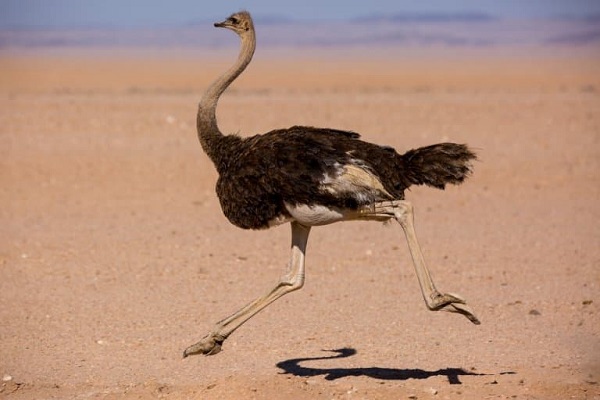
Ostriches are among the most recognizable birds. With their long necks and legs, adults stand between seven and 10 feet tall. The ostrich’s long legs allow it to run at speeds up to 45 mph.5 Only cheetahs are fast enough to keep up with these big birds.
SEE ALSO: Top 10 Biggest Birds in the World
They dig holes in the dirt to bury their eggs, and they have to lower their necks to turn the eggs with their beaks. From far away, it can look as if they’re putting their heads in the sand.
4. Brown Bear
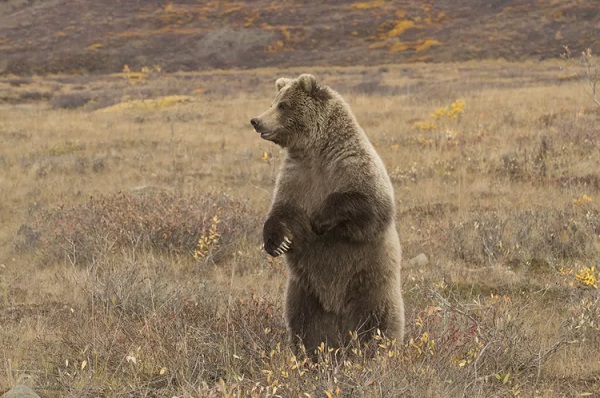
Brown bears (Ursus arctos) are a variable lot with many subspecies. Called grizzly bears in North America, they are among the largest carnivores on the planet. On all fours, they stand about five feet at the shoulder. Once they’re up on their hind legs, though, they stand at eight to nine feet tall.
Brown bears occupy a range of habitats across North America and Eurasia. Despite extinction in some locales, the IUCN lists the species as one of least concern everywhere except the Mediterranean, where it’s vulnerable. The pockets that struggle are mostly threatened by habitat destruction and poaching.
5. Alaskan Moose
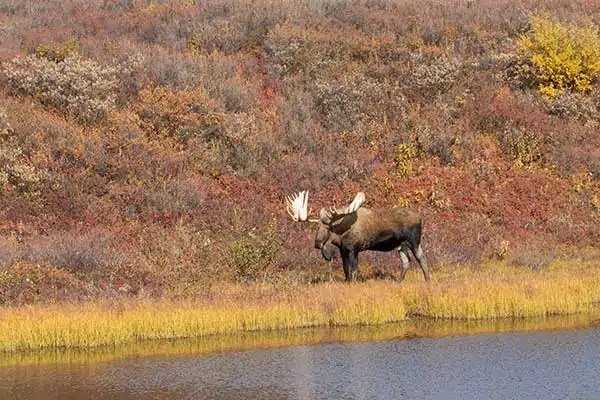
The Alaskan moose (Alces alces gigas) is a mighty herbivore of Alaska and the Yukon. Males reach 7.5 feet in height at the shoulder, and that’s before you add the neck, head, and antlers.
LEARN MORE: The Largest Moose Species in the World
Moose are vegetarians and can consume up to 70 pounds of food a day. Their height makes grazing on short grasses and plants difficult. Instead, they choose bushes and taller grasses. They’re also excellent swimmers because of their appetite for water plants, a source of sodium.
6. Dromedary Camel
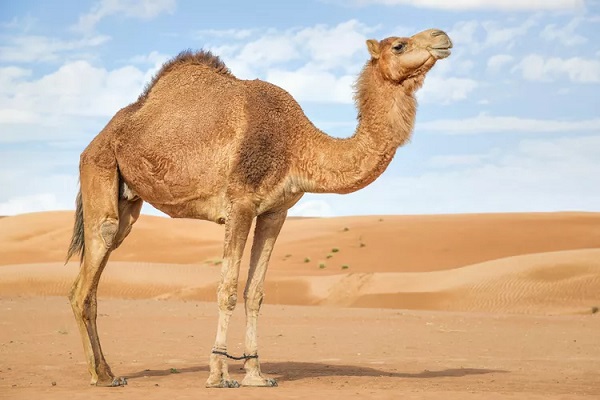
Also called Arabian or dromedary camels, are the tallest of the camel species. The males reach about 5.9 to 6.6 feet at shoulder height, a measurement that does not include a good portion of the hump. The size of the hump varies depending on whether the camel is using the fat reserves contained within for sustenance.
Despite their impressive stature, dromedary camels are extinct in the wild and have been for almost 2,000 years. Today, this camel is semi-domesticated, meaning it may wander in the wild but usually under the watchful eye of a herdsman.
7. Shire Horse
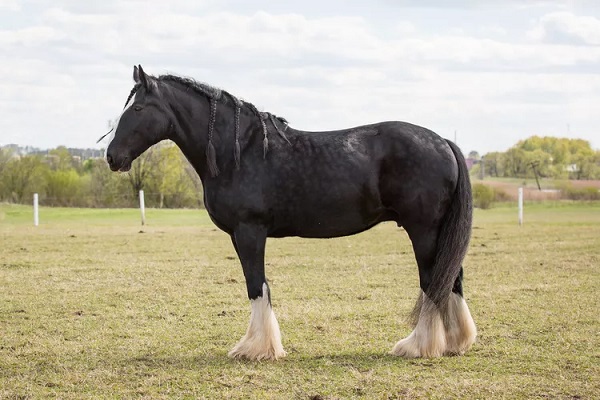
Horses, despite their generally gentle nature, can be intimidating in size. This factor is especially true for the Shire horse, a breed descended from the English “great horse,” which was used by men in full armor hundreds of years ago. The Shire horse is sturdy and powerful.
The Shire horse averages about 17 hands, or five feet, seven inches tall at the withers (the ridge between the shoulder blades). When you add the neck and head, which will vary in size, you have one tall animal.
8. American Bison
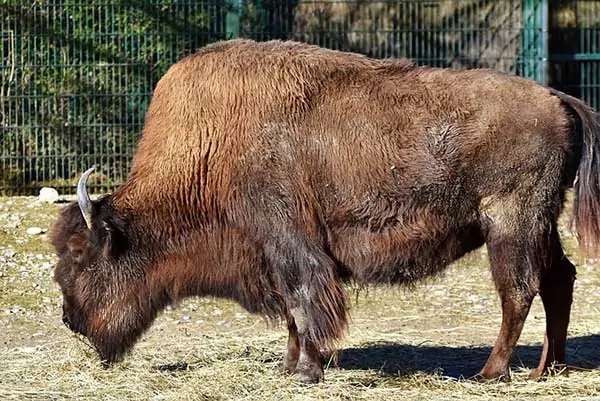
On all fours, males of this brown, shaggy-haired species stand between 5.5 and six feet, one inch at the shoulders.
The American bison used to roam North America in large herds, but a combination of hunting, slaughter, and bovine viruses led to their near-extinction in the 19th century. Today, the species is near threatened, its last remaining 11,000 to 13,000 mature individuals kept in U.S. national parks or preserves.


